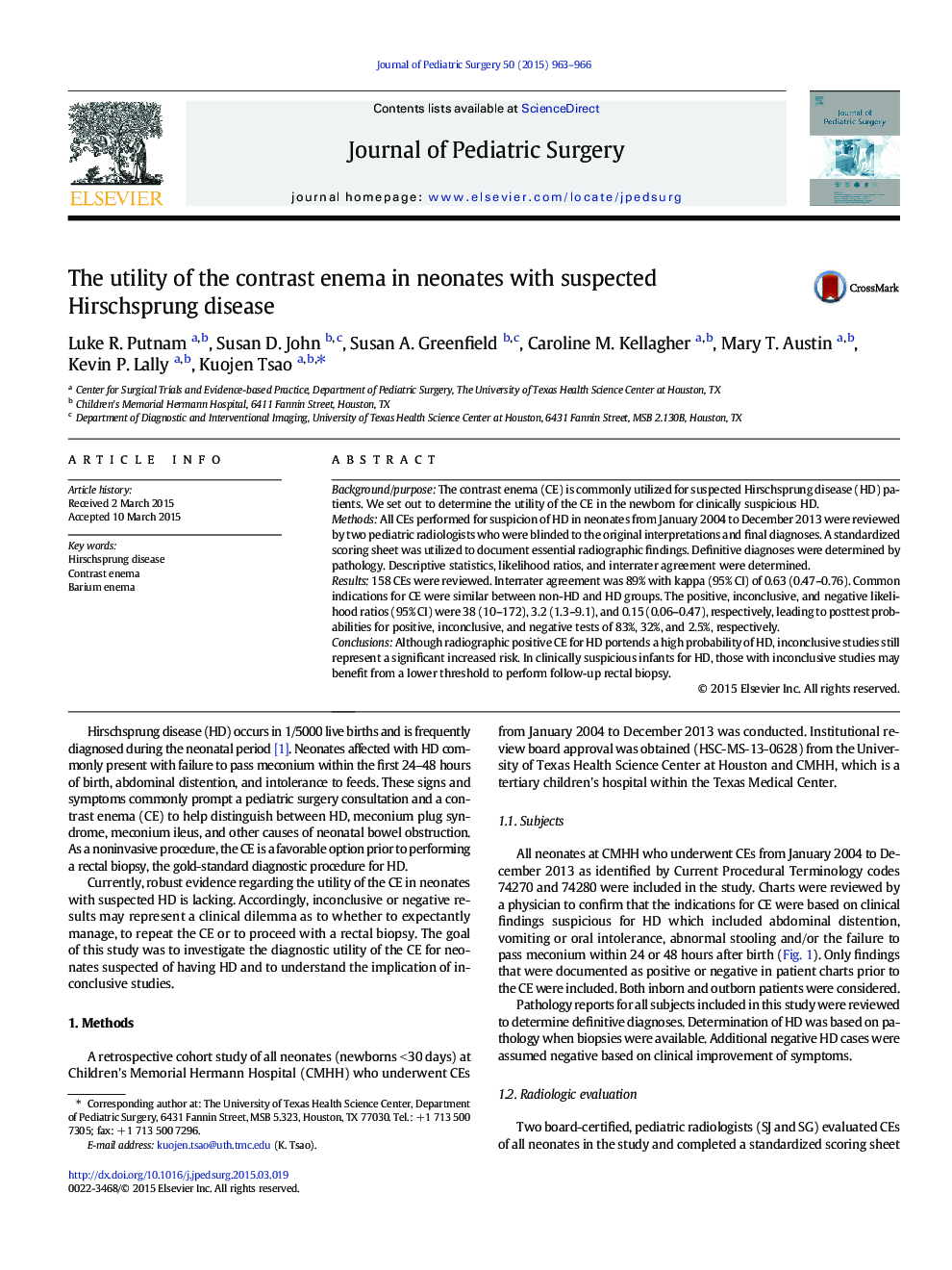| Article ID | Journal | Published Year | Pages | File Type |
|---|---|---|---|---|
| 4155046 | Journal of Pediatric Surgery | 2015 | 4 Pages |
Background/purposeThe contrast enema (CE) is commonly utilized for suspected Hirschsprung disease (HD) patients. We set out to determine the utility of the CE in the newborn for clinically suspicious HD.MethodsAll CEs performed for suspicion of HD in neonates from January 2004 to December 2013 were reviewed by two pediatric radiologists who were blinded to the original interpretations and final diagnoses. A standardized scoring sheet was utilized to document essential radiographic findings. Definitive diagnoses were determined by pathology. Descriptive statistics, likelihood ratios, and interrater agreement were determined.Results158 CEs were reviewed. Interrater agreement was 89% with kappa (95% CI) of 0.63 (0.47–0.76). Common indications for CE were similar between non-HD and HD groups. The positive, inconclusive, and negative likelihood ratios (95% CI) were 38 (10–172), 3.2 (1.3–9.1), and 0.15 (0.06–0.47), respectively, leading to posttest probabilities for positive, inconclusive, and negative tests of 83%, 32%, and 2.5%, respectively.ConclusionsAlthough radiographic positive CE for HD portends a high probability of HD, inconclusive studies still represent a significant increased risk. In clinically suspicious infants for HD, those with inconclusive studies may benefit from a lower threshold to perform follow-up rectal biopsy.
